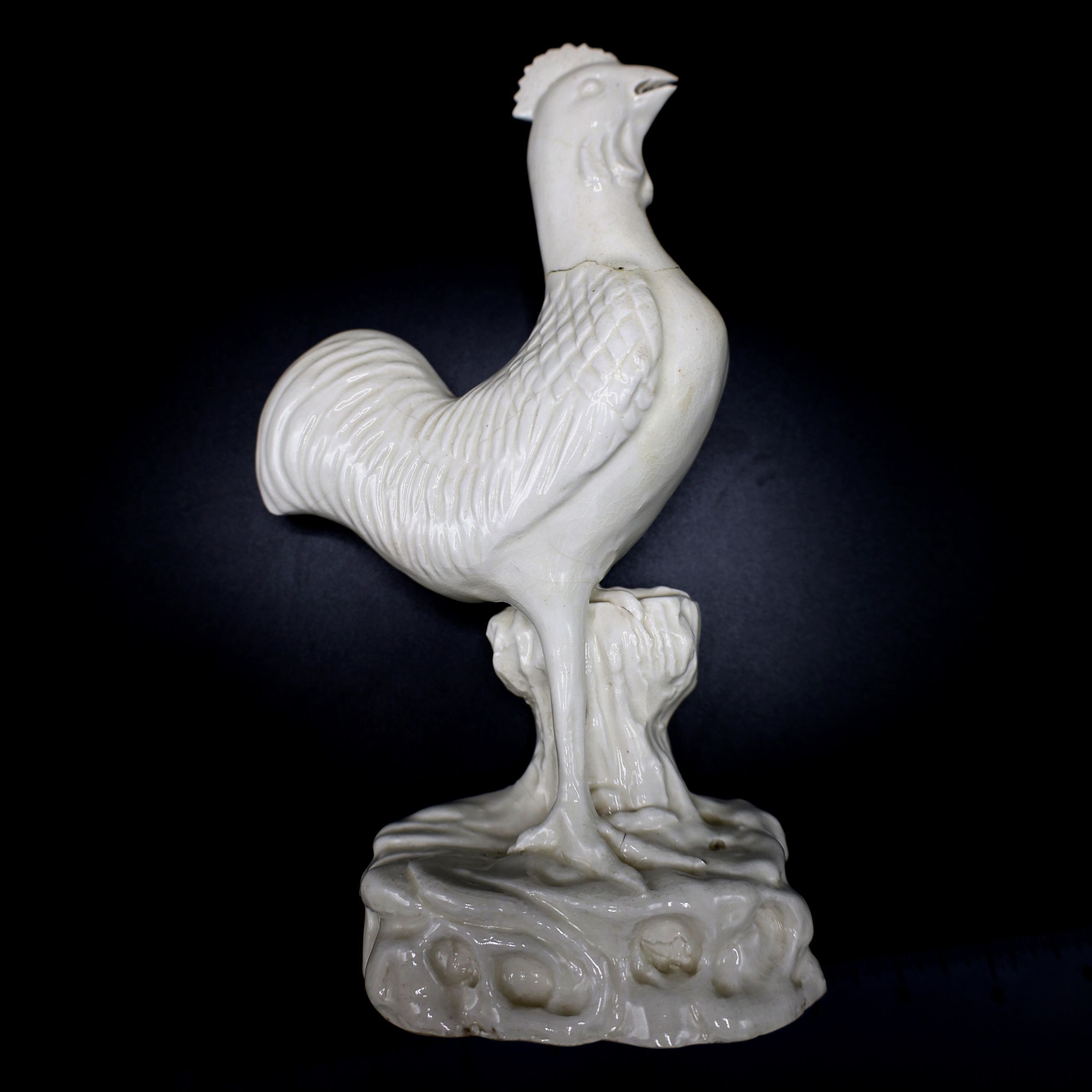Name/Title
Rooster StatueEntry/Object ID
2021.2.85.46Description
Part of Mary Bromfield's collection, this white rooster stands tall on a base of stylized tree roots. One foot rests on a tree stump. His beak is slightly open, and his comb, although small, stands straight. There is a handwritten CHINA mark on the inside.Context
Mary Appleton Bromfield (née Wood) collected ceramic roosters. Although it isn't known when she started this collection, it most likely began during her years in France, considering the symbolic importance of roosters to that country. The rooster collection is now mostly divided between the Honeymoon Room and the Dining Room.
The Gallic rooster is the unofficial national symbol of France. It has an association with that country that dates back to the Middle Ages. The Latin word Gallus means an inhabitant of Gaul (That part of Europe that during the Iron Age included modern France at its heart.), and gallus, the Latin word for rooster.
The word was initially used by the enemies of France as a pun. It was adopted by the early kings of France for its strong Christian symbolism – before his arrest, Jesus predicted that Peter would deny Him three times before a rooster crowed on the following morning. Upon hearing the cock's crow, Peter remembered Jesus' words. The rooster's crowing became a symbol of the Christian attitude of watchfulness for the sudden return of Christ.
During the Renaissance, the rooster became a symbol of France as a Catholic country. However, over the following centuries, the popularity of the Gallic rooster declined until it was brought back during the French Revolution of 1789. The Gallic rooster, colloquially named Chanteclair, has been a national emblem.
- Adapted from research and text by Thomas Bachelder of the Malabar Farm FoundationLocation
Room
Honeymoon RoomBuilding
The Big HouseOhio State Park
Malabar Farm State Park
